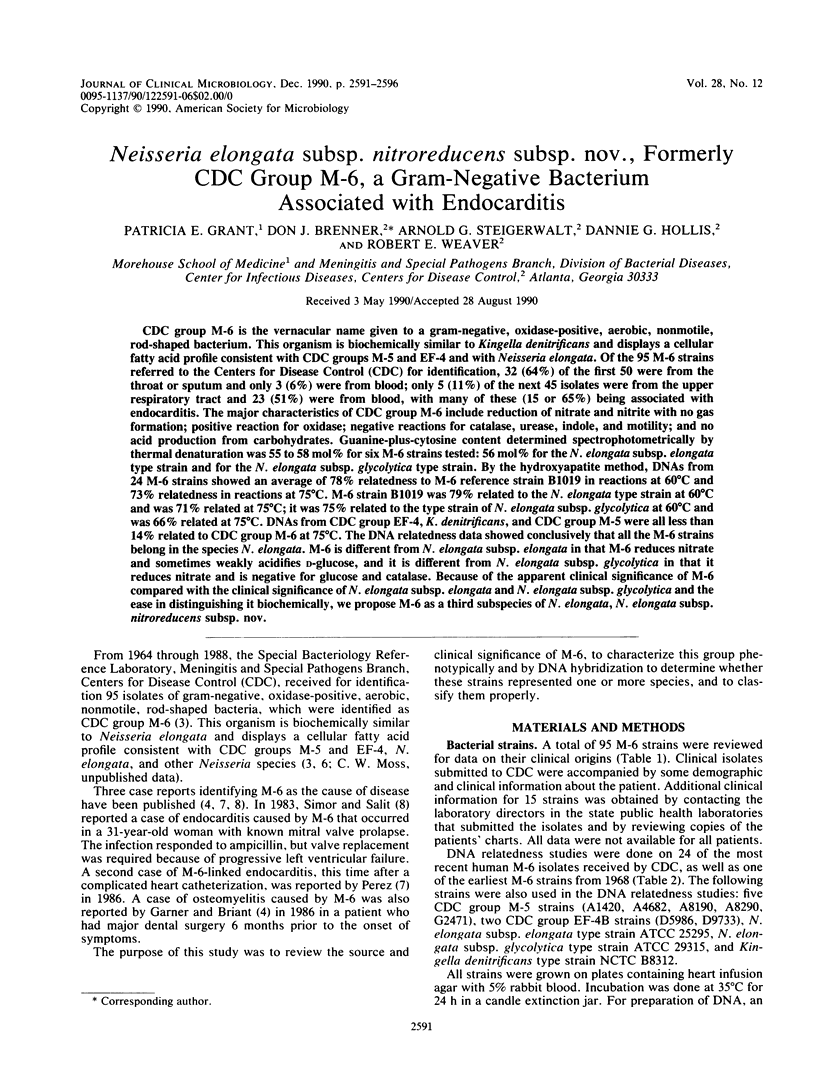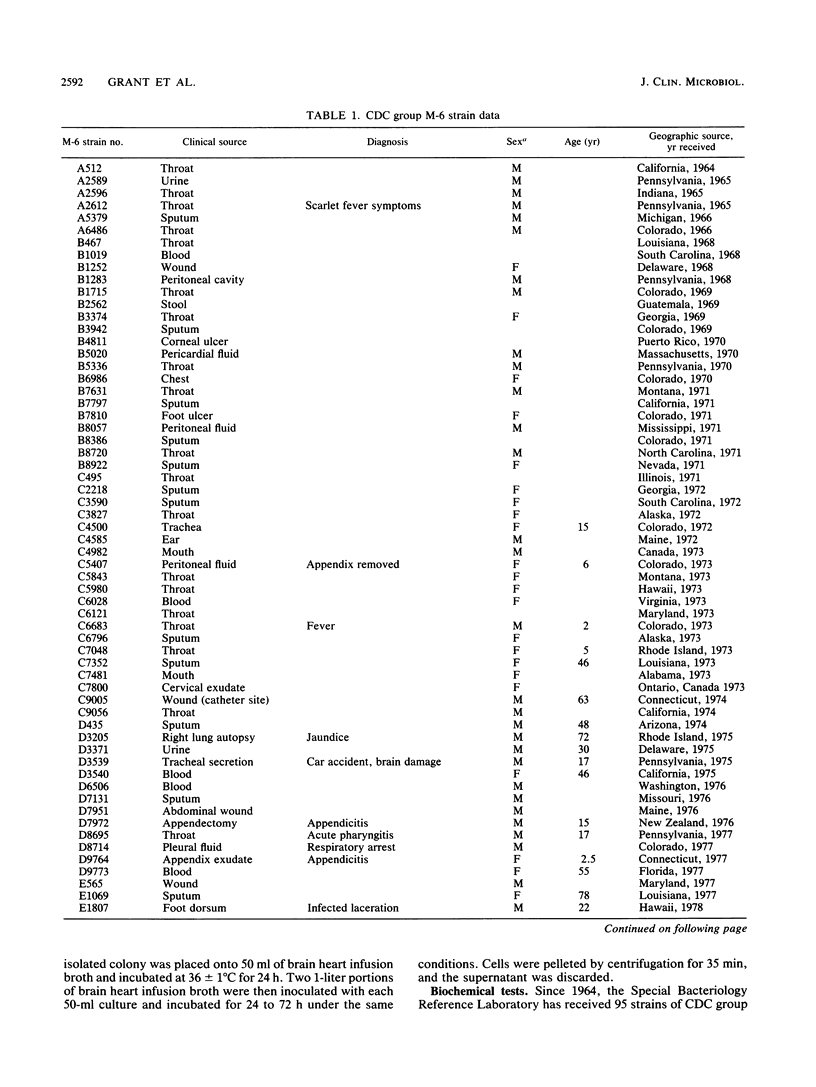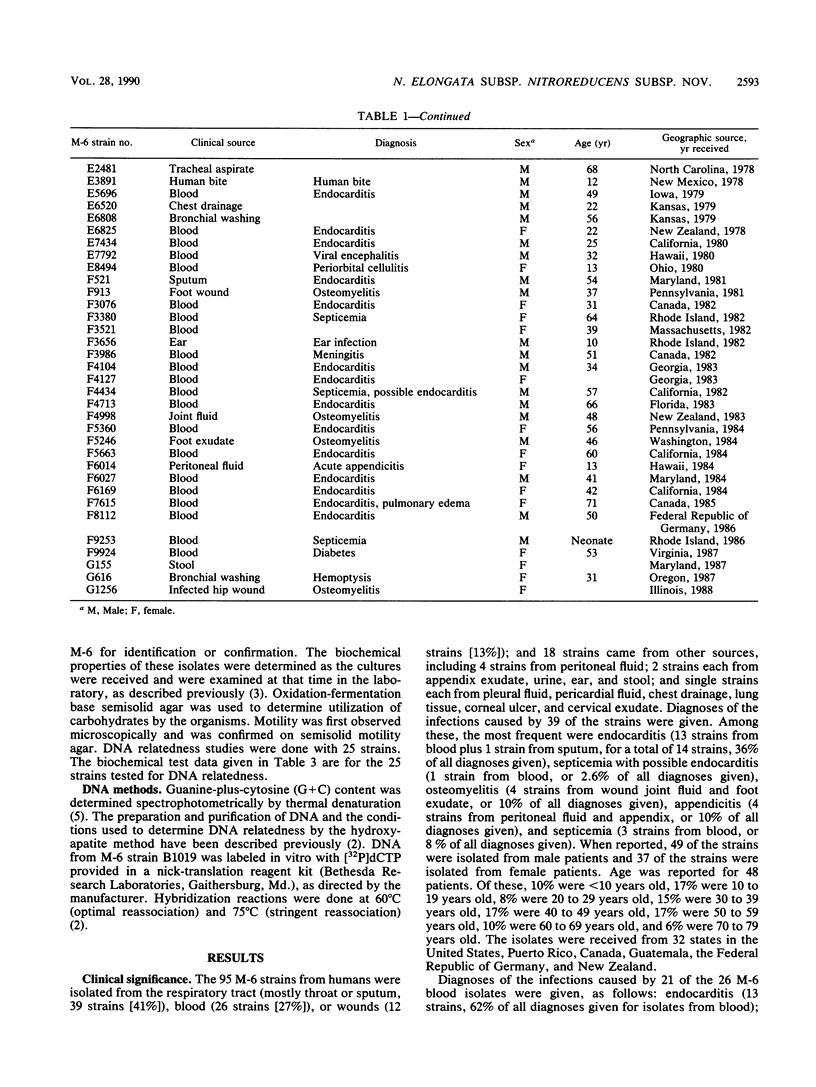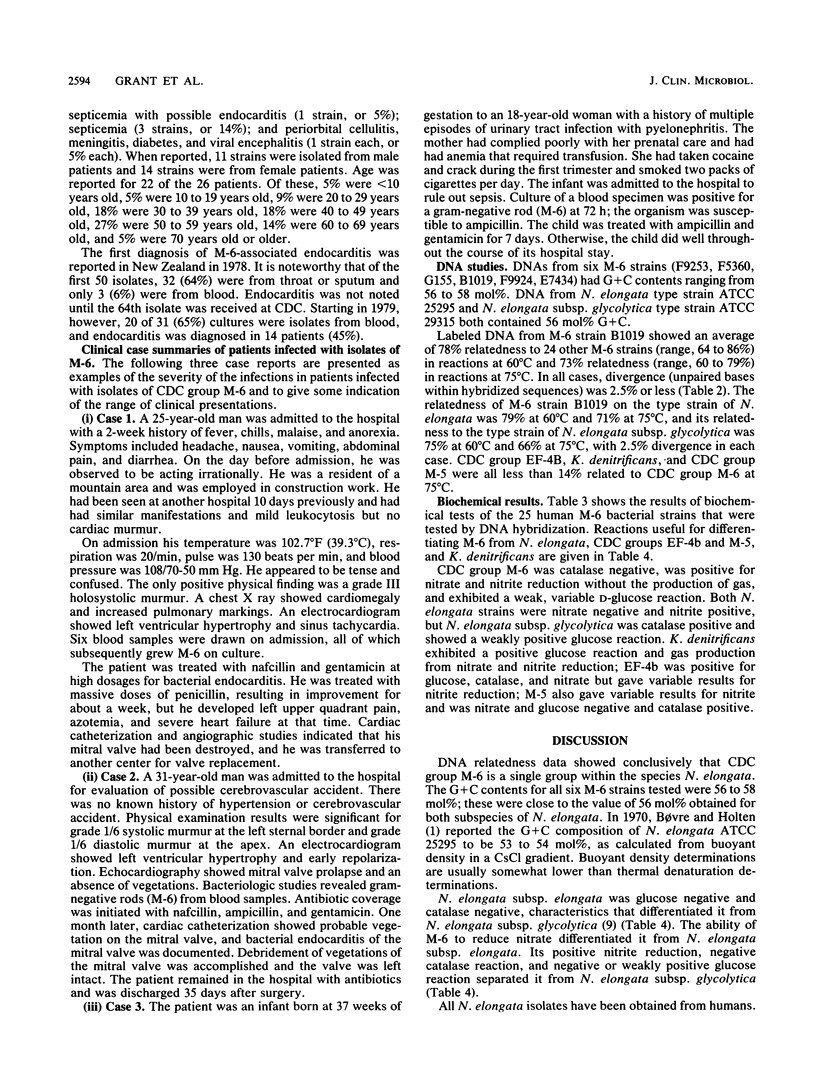Abstract
CDC group M-6 is the vernacular name given to a gram-negative, oxidase-positive, aerobic, nonmotile, rod-shaped bacterium. This organism is biochemically similar to Kingella denitrificans and displays a cellular fatty acid profile consistent with CDC groups M-5 and EF-4 and with Neisseria elongata. Of the 95 M-6 strains referred to the Centers for Disease Control (CDC) for identification, 32 (64%) of the first 50 were from the throat or sputum and only 3 (6%) were from blood; only 5 (11%) of the next 45 isolates were from the upper respiratory tract and 23 (51%) were from blood, with many of these (15 or 65%) being associated with endocarditis. The major characteristics of CDC group M-6 include reduction of nitrate and nitrite with no gas formation; positive reaction for oxidase; negative reactions for catalase, urease, indole, and motility; and no acid production from carbohydrates. Guanine-plus-cytosine content determined spectrophotometrically by thermal denaturation was 55 to 58 mol % for six M-6 strains tested: 56 mol % for the N. elongata subsp. elongata type strain and for the N. elongata subsp. glycolytica type strain. By the hydroxyapatite method, DNAs from 24 M-6 strains showed an average of 78% relatedness to M-6 reference strain B1019 in reactions at 60 degrees C and 73% relatedness in reactions at 75 degrees C. M-6 strain B1019 was 79% related to the N. elongata type strain at 60 degrees C and 71% related at 75 degrees C; it was 75% related to the type strain N. elongata subsp. glycolytica at 60 degrees C and was 66% related at 75 degrees C. DNAs from CDC group EF-4, K. denitrificans, and CDC group M-5 were all less than 14% related to CDC group M-6 at 75 degrees C. The DNA relatedness data showed conclusively that all the M-6 strains belong in the species N. elongata. M-6 is different from N. elongata subsp. elongata in that M-6 reduces nitrate and sometimes weakly acidifies D-glucose, and it is different from N. elongata subsp. glycolytica in that it reduces nitrate and is negative for glucose and catalase. Because of the apparent clinical significance of M-6 compared with the clinical significance of N. elongata subsp. elongata and N. elongata subsp. glycolytica and the ease in distinguishing it biochemically, we propose M-6 as a third subspecies of N.elongata, N. elongata subsp. nitroreducens subsp. nov.
Full text
PDF





Selected References
These references are in PubMed. This may not be the complete list of references from this article.
- Bovre K., Holten E. Neisseria elongata sp.nov., a rod-shaped member of the genus Neisseria. Re-evaluation of cell shape as a criterion in classification. J Gen Microbiol. 1970 Jan;60(1):67–75. doi: 10.1099/00221287-60-1-67. [DOI] [PubMed] [Google Scholar]
- Brenner D. J., McWhorter A. C., Knutson J. K., Steigerwalt A. G. Escherichia vulneris: a new species of Enterobacteriaceae associated with human wounds. J Clin Microbiol. 1982 Jun;15(6):1133–1140. doi: 10.1128/jcm.15.6.1133-1140.1982. [DOI] [PMC free article] [PubMed] [Google Scholar]
- Garner J., Briant R. H. Osteomyelitis caused by a bacterium known as M6. J Infect. 1986 Nov;13(3):298–300. doi: 10.1016/s0163-4453(86)91487-8. [DOI] [PubMed] [Google Scholar]
- MARMUR J., DOTY P. Determination of the base composition of deoxyribonucleic acid from its thermal denaturation temperature. J Mol Biol. 1962 Jul;5:109–118. doi: 10.1016/s0022-2836(62)80066-7. [DOI] [PubMed] [Google Scholar]
- Moss C. W., Wallace P. L., Hollis D. G., Weaver R. E. Cultural and chemical characterization of CDC groups EO-2, M-5, and M-6, Moraxella (Moraxella) species, Oligella urethralis, Acinetobacter species, and Psychrobacter immobilis. J Clin Microbiol. 1988 Mar;26(3):484–492. doi: 10.1128/jcm.26.3.484-492.1988. [DOI] [PMC free article] [PubMed] [Google Scholar]
- Perez R. E. Endocarditis with Moraxella-like M-6 after cardiac catheterization. J Clin Microbiol. 1986 Sep;24(3):501–502. doi: 10.1128/jcm.24.3.501-502.1986. [DOI] [PMC free article] [PubMed] [Google Scholar]
- Simor A. E., Salit I. E. Endocarditis caused by M6. J Clin Microbiol. 1983 May;17(5):931–933. doi: 10.1128/jcm.17.5.931-933.1983. [DOI] [PMC free article] [PubMed] [Google Scholar]


